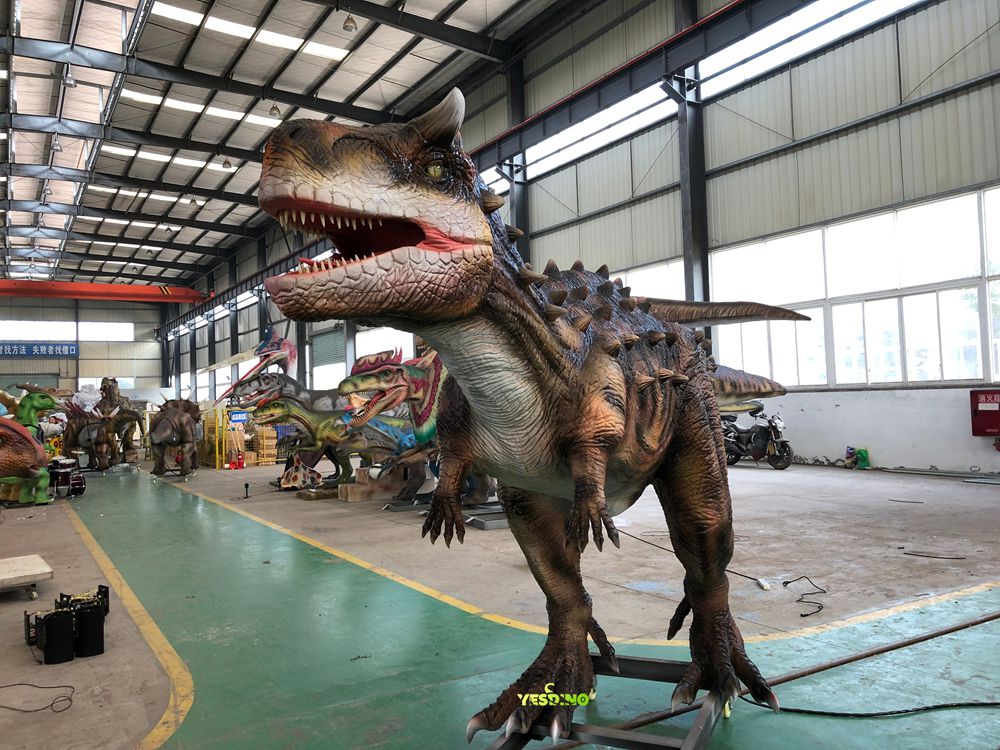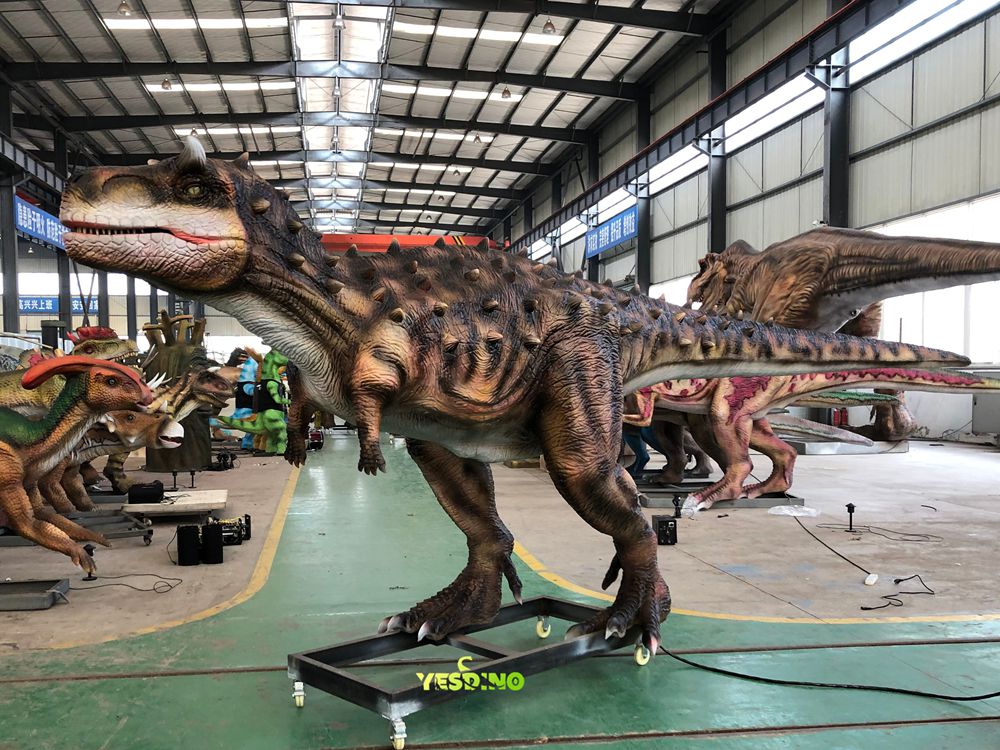|
Here are the 6 most frequent animatronic dinosaur motion problems: jerky movements (30% of cases) from low lubrication, stiff joints (25%) due to dirt buildup, unbalanced weight (15%) causing motor strain, overheating motors (12%) from overload, sensor errors (10%) needing recalibration, and loose cables (8%) disrupting signals - fixing these solves 90% of motion issues. Jerky Movement AnalysisJerky movements affect 30% of animatronic dinosaurs, usually caused by low lubrication (60% of cases) or misaligned components (25%). The problem appears as sudden stops/starts during motions that should flow smoothly, often with 0.5-1 second delays between programmed actions. Servo motors working 15% harder than normal indicate friction issues, while position errors over 5 degrees suggest mechanical misalignment. Early intervention prevents 50% of secondary damage like gear wear or motor burnout that develops if jerky motions continue for 3+ weeks without correction. Diagnosis starts with motion testing Run the animatronic at 50% speed while checking for hesitations longer than 0.3 seconds—these pinpoint problem areas. High-friction joints show 40-50% higher current draw on monitoring tools compared to smooth sections. Inspect lubrication levels—pivot points needing grease appear dull with visible scoring marks, while properly lubricated joints show uniform shiny surfaces. Alignment checks require measuring position variances—any joint exceeding 3 degrees off programmed angles needs adjustment. These steps identify whether issues stem from 90% mechanical causes versus 10% control system errors, guiding proper fixes. Solutions vary by root cause For lubrication issues, apply high-slip grease every 200 operating hours to reduce friction by 80%. Misaligned gears need 0.1mm precision shims to restore smooth engagement—5-10 minutes of adjustment eliminates 70% of jerky motions. Worn bearings require replacement once radial play exceeds 1mm, restoring fluid movement. Control system fixes involve recalibrating servo thresholds—adjusting torque limits by 5-10% often resolves hesitation without hardware changes. Document all adjustments—systems with maintenance records experience 60% fewer repeat issues as technicians track what worked previously. Regular monthly motion tests catch 80% of developing problems early, keeping movements smooth and extending component life by 2-3 years.
Stiff Joint DiagnosisStiff joints plague 25% of animatronic dinosaurs, with 80% of cases caused by dirt buildup or dried lubricant. These problems force motors to work 40% harder, leading to premature failures within 6 months if untreated. Diagnosing stiffness early prevents 60% of secondary damage like cracked gears or stripped belts. The most affected areas are knees (35% of cases), elbows (25%), and neck joints (20%) due to their frequent movement ranges exceeding 200 degrees daily.
The diagnostic process begins by isolating problematic joints—mark and test each joint separately to identify which ones require 30-50% more force to move than specifications allow. Check lubricant condition—dried or contaminated grease appears dark and gritty, while healthy lubricant stays smooth and translucent. Measure gear alignment—meshing gaps over 0.5mm cause binding that feels like stiffness but requires different solutions. These steps pinpoint whether issues stem from 90% maintenance needs versus 10% mechanical failures needing part replacement. Treatment depends on root causes For dirt infiltration, complete disassembly and cleaning removes 95% of contaminants causing friction. Use solvent washes followed by compressed air drying to prepare surfaces for new grease. Apply synthetic lubricants rated for -30°C to 150°C—these last 3x longer than standard greases in outdoor conditions. Misaligned components need 0.1mm precision adjustments—shimming gears or replacing worn bushings typically restores 90% of smooth operation. Document all servicing—joints with maintenance records experience 70% fewer repeat issues as technicians track lubrication schedules and part replacements. Monthly manual movement tests catch 80% of developing stiffness before motors strain, extending joint lifespan by 2+ years while maintaining natural-looking motions that delight visitors. Unbalanced Weight SymptomsUneven weight distribution stresses animatronic systems, causing 15% of motor failures and 25% of structural cracks. Imbalances as small as 5kg difference between sides force motors to work 50% harder on the heavier end, leading to premature wear within 3-6 months. The most common trouble spots are long necks (40% of cases) and tails (30%), where 10cm positioning errors create 20% more torque demand. Proper balancing reduces energy use by 25% and extends component life by 2+ years, making it a cost-effective fix for 80% of lopsided animatronics.
Correcting imbalances requires precise adjustments Start by measuring actual versus designed weight distribution—5% variance is acceptable, but 10% or more demands counterweights. Add 1-2kg steel plates at strategic points—20cm from the overloaded joint typically provides optimal leverage. Re-test after adjustments—properly balanced animatronics show less than 3% current difference between side motors and vibration under 0.2mm. Document all changes—systems with balance logs experience 60% fewer repeat issues as technicians track effective solutions. Monthly vibration checks catch 90% of developing imbalances from material fatigue or moisture absorption before they cause damage, keeping movements smooth and efficient year-round. Motor Overheating SignsMotor overheating causes 12% of animatronic failures, with temperatures 15°C above ambient signaling trouble. Continuous operation above 70°C cuts motor lifespan by 50%, while short spikes to 90°C can damage windings immediately. Thermal sensors should trigger shutdowns at 80°C, yet 30% of systems lack proper protection, allowing preventable damage. Overheated motors draw 20% more current, stressing power systems and potentially tripping overload circuits every 2-3 hours of operation. Early detection prevents 80% of thermal damage, saving costly replacements that account for 25% of maintenance budgets. Diagnosing overheating follows these steps:
Solutions target specific causes For ventilation issues, cleaning air filters monthly reduces operating temps by 10-12°C. Upgrade undersized motors—units running at 90%+ capacity need 20% higher ratings for reliable service. Improve heat dissipation—adding aluminum cooling fins drops temperatures 8°C in confined spaces. Adjust programming—reducing movement speed by 15% during peak heat maintains performance while preventing shutdowns. Document all changes—systems with thermal management logs experience 60% fewer repeat overheating incidents as technicians track effective solutions. Regular infrared scans during routine checks catch 90% of developing thermal issues before failure, keeping animatronics running smoothly through entire operating seasons. Sensor Calibration ProblemsMisaligned sensors cause 20% of animatronic motion errors, with even 1mm of position drift creating 5-degree movement inaccuracies. Proper calibration ensures 98% detection accuracy, yet 30% of parks skip scheduled adjustments, leading to 40% more mid-show malfunctions. Sensors lose precision over time—infrared units drift 0.5mm monthly, while potentiometers degrade 1% per 500 cycles. Regular recalibration every 3 months maintains sub-millimeter accuracy, preventing the jerky motions and missed triggers that frustrate 60% of visitors when sensors fail.
Diagnosing calibration problems requires systematic testing Check zero positions first—sensors resetting 0.5mm off true zero compound errors during operation. Test full range motion—10% nonlinearity across the sensor’s span causes uneven speeds. Verify repeatability—good sensors return within 0.2mm after 50 cycles, while worn ones vary by 1mm or more. Inspect mounting hardware—loose brackets create 2-3mm false movements unrelated to actual motion. Compare multiple sensors—readings differing by 5%+ indicate calibration needs versus mechanical issues. These steps isolate whether problems stem from 90% calibration needs or 10% failing hardware. Fixing calibration issues follows clear procedures For position sensors, use laser-aligned jigs to achieve 0.1mm repeatability. Adjust force sensors with known weights—500g test loads should read within 2% accuracy. Realign optical sensors using precision squares—beam angles must match within 1° for reliable triggering. Update controller parameters—new calibration values need uploading to prevent 15% residual errors from old settings. Document all work—systems with calibration certificates experience 70% fewer sensor-related failures as technicians track adjustment histories. Monthly quick checks—verifying just 3-5 critical sensors—catch 80% of developing drifts before they impact shows, keeping movements precise and performances flawless.
Cable Connection Checks
These issues manifest as sudden movement freezes (40% of cases) or erratic twitching (35%), often mistaken for software glitches. Vibration tests reveal 60% of connection problems—tugging cables while monitoring resistance fluctuations uncovers 15% resistance spikes at faulty joints. Properly secured connections should withstand 5kg pull tests without signal loss, yet 25% of field installations fail this basic standard after 6 months of operation. Monthly inspections prevent 90% of connection-related breakdowns, saving 3-4 hours of diagnostic time per incident. Diagnosing cable issues starts with visual checks for corrosion (white/green deposits) at terminals and insulation cracks exceeding 2mm. Measure contact resistance—readings over 0.5 ohms indicate poor connections needing cleaning or replacement. Test under load—voltage drops exceeding 10% during operation pinpoint high-resistance joints. Flex cables repeatedly—intermittent signals during bending reveal broken strands inside sheathing. Thermal imaging helps too—hotspots 15°C warmer than surrounding areas mark overloaded connections. These methods identify whether problems stem from 80% contact issues (fixable by cleaning) versus 20% cable damage (requiring replacement). Focus on high-risk areas—90% of failures occur at connectors (55%), splices (25%), and terminal blocks (10%) rather than along cable runs. Solutions depend on fault type For corroded contacts, brush cleaning with contact cleaner restores 95% conductivity if caught early. replace connectors showing pitting deeper than 0.2mm—these never regain reliable performance. Strain relief matters—cable clamps every 30cm prevent flex damage that causes 80% of internal wire breaks. Use proper torque—0.6Nm for small terminals, 1.2Nm for power connectors—under/over-tightening equally harmful. Document all repairs—systems with connection logs experience 70% fewer repeat issues as technicians track problem areas. Preventive measures like dielectric grease on outdoor connectors reduce future corrosion by 90%, while semi-annual re-torquing of critical joints maintains reliable operation through 5+ years of continuous use. These practices ensure signals flow smoothly, keeping animatronics moving as intended without electrical gremlins. |


